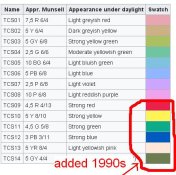In principle, with this approach it should be possible to equal or exceed the quality of a drum scan.
Yes, it is possible to beat a top drum scanner by stitching a 3x3 dslr mosaic of a 35mm shot. To beat the scanner with MF or LF film you need many crops stitched. Still this requires a substantial effort and good skills
As always it's not much benefical to go beyond a certain point as many times there are other limiting factors, many shots won't see a benefit beyond 3000dpi effective resolving power, many times beyond that we only may obtain a more defined grain depiction that may be seen well beyond x10 enlargements.
I have been experimenting with a 4x plan-achro microscope objective plus stitching using a crop sensor camera to acquire the images.
The 4x Plan may require a relay lens, is it infinite focus corrected type?
For top resolving power you may try a reversed enlarger lens, adjust magnification to make the projection on the sensor be around 4 times larger than the original, in thise conditions a Nikon EL 50 f/2.8 stopped at f/5.6 or f/8 will deliver around 10.000 dpi effective witch beats any drum in effective dpi terms, this is very cheap and probably and probably the easy way. Still there are other factors like dynamic range and color accuracy...
You also may add a window in the rear to frame a crop matching the sensor size, if not excessive illumination circle of the optics may generate flare, or you may mask on film to frame only the region the sensor sees.
It remains to be seen how well the color fidelity issue will pan out.
The DSLR scans won't deliver "good" colors straight from the acquisition, for sure you may obtain the same colors than with any other systems but there is a substantial effort in that. You may simple shot a color checker and make a calibration, but this is not the end of the history...
Color film has evolved over a century by delivering sound color interpretations o different subjects that are beyond color accuracy or neutrality.
Let me say an analogy. Electric guitars and valve amplifiers have evolved over decades together, with the armonic distortion provided by the valves being incorporated in the aesthetics, today a solid state amplifier may have to add something to the technically perfect linear amplification if wanting a cool sound from guitars.
In the same way a perfect color calibration of the dslr scanning won't deliver those colors that make a hard man cry, you need something more to exploit the film spectral interpretation, this is specially well seen in portraiture: nailing those tonal nuances that Portra/Fuji 160 can deliver is not that easy.
Silverfast has "Negafix", this delivers an specific color mapping for each kind of film. That mapping is not an easy color balance you may emulate with a few mouse clicks... I guess that mapping is inspired in the RA-4 interpretation of the inverted colors in the negative.
So a way to calibrate the DSLR colors would be making a calibration that maps the DSLR result with the Negafix results for each film type. Perhaps an easy way may be the Color Matching feature of 3D LUT Creator tool, to get a 3D LUT that can be used in Photoshop.
With slides color is easier, the slide itself is the reference, with Color Negative film there is no absolute reference, and color interpretion has to be sound for a refined result.




 I just made myself one promise. I will never coat my own photo sensitive material.
I just made myself one promise. I will never coat my own photo sensitive material.
